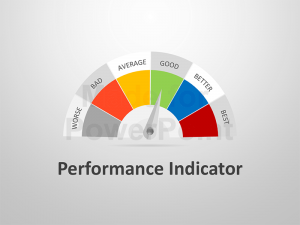Every PM wants their project to succeed. Including an Organizational Change Management (OCM) strategy as one of your deliverables can help in a big way.
So, as a Project Manager, what should you expect to see in a change management strategy? And what is its ultimate purpose? This is one of the most commonly used terms on a project relating to change management, as in, “We need a change management strategy!”, or, “Should that be in the change management strategy?”
If you are holding someone accountable for this work product you need to know what to expect and how to use it to your benefit.
Start with Purpose
 The first thing to be clear on is what you need to use this work product or deliverable for. Ultimately, the change management strategy leads to a change management plan and detailed schedule.
The first thing to be clear on is what you need to use this work product or deliverable for. Ultimately, the change management strategy leads to a change management plan and detailed schedule.
But first, before you invest the time to plan out change activities in detail, you need to make sure that all of your decision makers (sponsors, executives, steering committee, etc.) are in alignment with the activities you want to plan. They have to agree on the objective of each change management activity and its cost in terms of resource time and budget. That step is absolutely crucial.
It’s crucial because if you do not have this you can have support for important activities and tasks withdrawn because of time and budget constraints. It can become very frustrating when tasks that you believe are important and you are in the middle of, get eliminated repeatedly.
This, in turn, can lead to feelings that people don’t really care about other people (generally not true). It can further lead to feelings that your effort in this area is not valued or appreciated (that part is unfortunately somewhat true). And finally, it can lead to a difficult rollout where some of the blame falls on ineffective change management (that is something you might have to partially wear as a PM).
So the main purpose of the change management strategy is to get key decision makers aligned.
How you get this alignment is an art onto itself, and will be covered separately in the next blog. However, to accomplish that step you need a solid change management strategy work product. The purpose of this blog is to define the elements that need to be in that document.
Key Elements of a Change Management Strategy
 Let’s focus on the element that will set you apart from the pack of other PMs overseeing change management activities: Project Success Factors.
Let’s focus on the element that will set you apart from the pack of other PMs overseeing change management activities: Project Success Factors.
You need to know why each change management activity is important. If an activity does not somehow contribute to overall project success, you need to ask why it’s on your plan.
You get to this by asking what project success looks like. It’s surprising how common it is that people cannot answer that question easily. And that includes project sponsors, executive sponsors, and other key decision makers! They may know why they need the project, and what it’s going to do for the company in the long run. But often they don’t heave a ready answer on how to define success of the project itself at the end.
Ask yourself – could you answer that question for your project? Could your project leadership?
On a recent project we had to get multiple offices across the country to send forms to be processed in a new central location. The objective of the project was to reduce costs and inefficiencies from manual processing in each office. But how would we know that the project itself was successful?
We would have to wait at least a year after the project ended to see whether the cost and efficiency savings were there. So the project objective is not a good metric for project success!
Getting creative
We needed short-term proxy metrics that we could use while the project was still underway. For example in this particular case, one success metric we used was that as many offices as possible were willing to send all of their identified forms to be processed. Another was that processing accuracy was at the right, acceptable level.
These then need to be converted into measurable values, or KPIs (Key Performance Indicators). These often are both project management and change management metrics.
For example, in the case of as many offices as possible being willing to send forms for processing, we used two measures. The project measure was how many offices participated in the initial testing of the process (and how many forms they sent). The change management measure was how many offices participated in our change network meetings in advance of the test.
These KPIs were very telling. Those offices that were the most eager and willing to participate had a very positive experience upon go live. The most reluctant ones were also the most vocally critical because they faced the biggest challenges when we went live.
This actually had a very positive outcome for the PM of our project. She had senior people in offices who raved about how good the rollout was. And as for the complainers, they had to answer the question as to why their experience was so bad (since the central location was the same for everyone). Their criticism backfired, and they faced some high level scrutiny.
Do you want to hear another good outcome? These tough-to-deal-with offices provided the most support for the second phase of this massive project. And that made the PM’s job so much easier the second time around.
Other Elements
These are other elements that need to be in your OCM strategy document:
- How you intend to align leadership and engage all relevant stakeholders (in addition to communicating to them and training them).
- How you will communicate to your various audiences. If the project is big enough, a communication strategy often becomes a separate document linked to the OCM strategy
- How you will train your end users. Again, if the project is big enough, the traiing strategy also becomes a separate document linked to the OCM strategy. This is especially true for ERP implementations where training on the system is a core part of the project.
- How roles and reporting relationships will change, and how you will manage this transition. Often this is referred to as the job design, or organizational design strategy.
- How you intend on sustaining the changes made during the short life of a project so that they have a long-lasting effect in the organization. This usually involves performance management, recognition, and can include rewards, compensation and benefits.
Depending on the change management methodology used, there could be other elements. However, if you have these five, you will be covered.
What to avoid
Simply, details.
This is a strategy document (or documents if you have separate communications and training strategies). That means there has to be enough information for people to feel comfortable making decisions on whether to proceed to planning. But you want to avoid meeting everyone’s desire for additional details.
That is because details are often not available at the early stages of a project. And, secondly, always revising these documents to include more details means you can spend way too much time on them.
The most important thing to have is, for each activity:
- Name of activity
- Brief description
- Cost/benefit of the activity (i.e., how does it contribute to project success)
- Any additional costs associated, outside the approved budget
- Any additional resources required to dedicate their time outside the approved project resources
- Who will be ultimately accountable for the outcome of this activity
- General timing (e.g., two months starting in September)
That’s it. Anything more (i.e., what are all the activities, who all needs to participate, exact dates, etc.) is way too much. That will come later when you do a change management plan based on only the activities approved by your steering committee or executive sponsor.
That will be covered in a later blog. For now, I hope this is enough to get you rolling!










